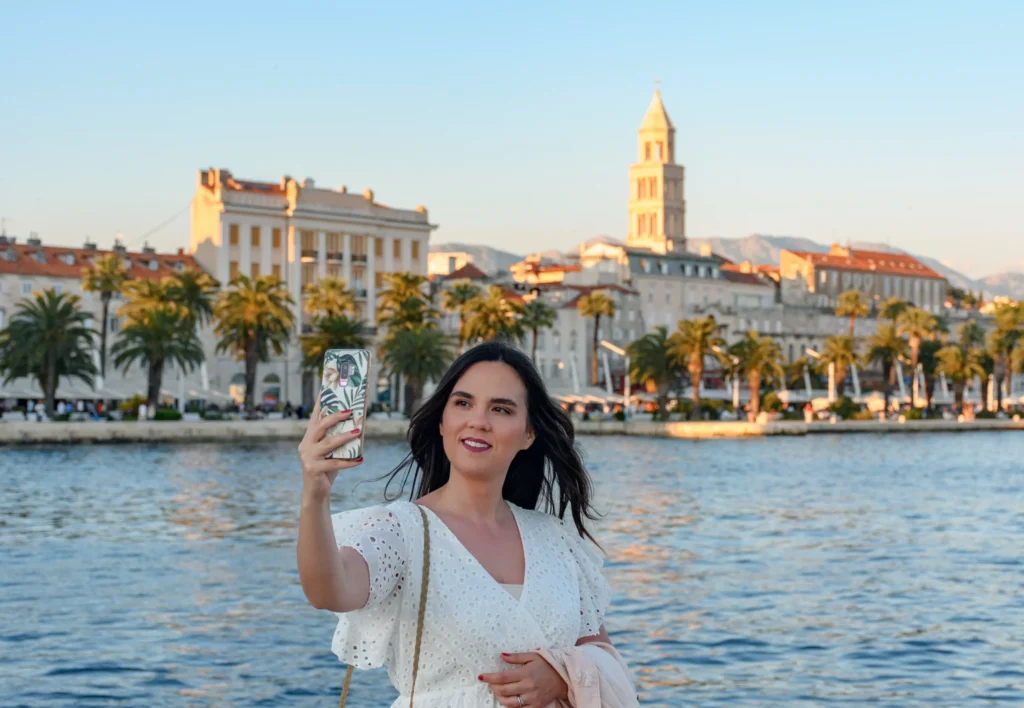Driving in Croatia
Tips for the Road
- Croatia follows the right-hand driving system
- Drivers should yield to traffic approaching from the right at junctions or crossroads, unless traffic signs indicate otherwise.
- Turning right on a red light is prohibited in Croatia. Drivers must wait for the green signal before proceeding.
- Headlights are mandatory during the day from the last Sunday in October to the last Sunday in March. They must also be used in tunnels and during conditions of poor visibility.
- Using mobile phones without a hands-free system while driving is strictly forbidden in Croatia.
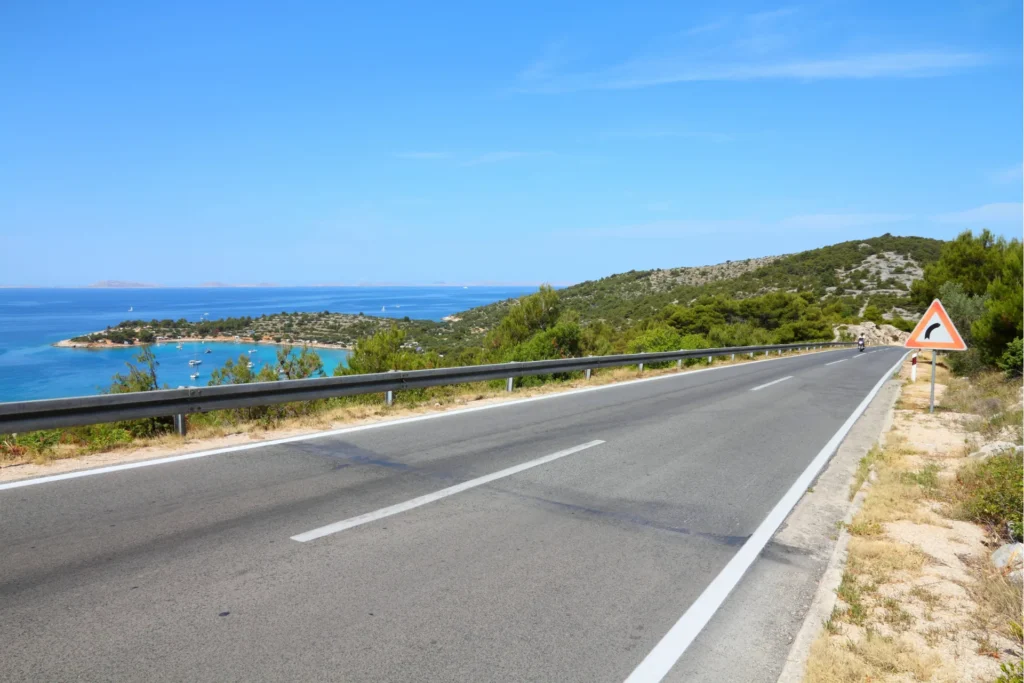
Road Types and Speed Limits
- Speed Limit: Typically 130 km/h (81 mph), though it can vary in certain areas or under adverse weather conditions.
- Characteristics: Croatia's Autoceste are the main highways connecting major cities and regions throughout the country. These roads may have tolls, and travelers should be prepared for toll expenses. Service areas with amenities such as fuel stations and restaurants are available along these routes.
- Speed Limit: Usually around 90 km/h (56 mph).
- Characteristics: These roads link cities and larger towns, offering routes through Croatia's varied landscapes, including coastal areas, mountains, and serve as alternatives to the motorways. They are typically toll-free.
- Speed Limit: Generally between 70-90 km/h (43-56 mph), varying based on the location and road conditions.
- Characteristics: County roads in Croatia connect smaller towns within counties. These roads traverse various landscapes, from urban areas to rural settings.
- Speed Limit: Typically ranges from 50 km/h (31 mph) in urban areas to 70 km/h (43 mph) in rural areas.
- Characteristics: The roads within towns and cities. They are used for local traffic and getting to rural areas nearby.
In Croatia, highways (autoceste) operate on a toll system where you receive a ticket upon entering and pay a fee based on the distance traveled upon exiting. The payment options for these tolls include cash, credit cards, and the ENC (Elektronička Naplata Cestarina) system, which is Croatia's electronic toll collection system. The ENC, a compact electronic device, enables automatic toll payments and allows drivers to use dedicated lanes at toll booths for quicker passage. This device can be obtained at service centers along the highways or applied for online, often providing discounts on toll charges.
- Autocesta A1 (Dalmatina): Croatia's primary north-south expressway, facilitating swift travel between Zagreb and Split, and passing through key cities.
- Autocesta A3 (Bregana-Lipovac): An essential east-west artery in Croatia, stretching from Bregana near the Slovenian border to Lipovac near Serbia, linking Zagreb with major towns.
- Autocesta A6 (Rijeka-Zagreb): Connects the capital, Zagreb, to the Adriatic port city of Rijeka, serving as a vital link for coastal access.
- Autocesta A2 (Zagreb-Macelj): Provides efficient travel between Zagreb and the Slovenian border, facilitating international transit.
- Jadranska Magistrala (State Road D8): Perhaps the most famous, this road stretches along the Adriatic coast. It offers breathtaking views of the sea, islands, and coastal towns, running from Rijeka in the north all the way to Dubrovnik in the south. This route is particularly famous for its stunning sunsets and picturesque landscapes.
Top City Destinations
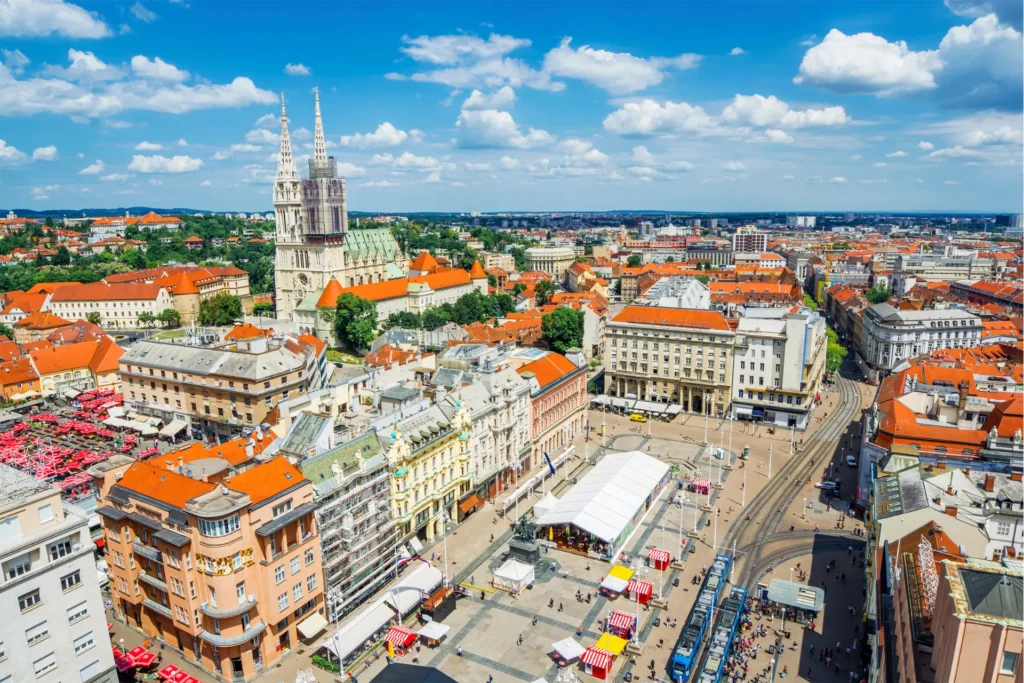
Zagreb
Zagreb, Croatia’s dynamic capital, is a treasure trove of cultural and historical delights. Visit the Zagreb Cathedral where you can tackle the climb up to the neo-Gothic architectural wonder and get an amazing view of the city, or for an intriguingly somber experience, explore the Museum of Broken Relationships, a one-of-a-kind venue that delves deep into the complex world of love and heartache. You can hop on the Zagreb hop-on hop-off bus to explore the city’s history in the Upper Town, where the ancient Stone Gate and lively Ban Jelačić Square stand out. If you’re looking for a souvenir to capture the essence of your visit, a handcrafted licitar heart is a must; these colorful, sweet treats are a symbol of Zagreb’s rich cultural heritage. As the sun sets, Tkalčićeva Street, affectionately known as Juran, awakens to the rhythms of lively pubs and clubs, each offering a unique slice of Zagreb’s nightlife.
Zadar
Zadar is a beautiful city located on the Adriatic Sea. Explore the narrow streets of Zadar’s Old Town, a living museum where Roman ruins, medieval churches, Renaissance, and Baroque buildings blend seamlessly. The Church of St. Donatus, which dates back to the 9th century, is one of Zadar’s most iconic landmarks with its circular shape and impressive architecture. Try some local specialties like fresh seafood, Pag cheese, and the traditional cherry liqueur Maraschino. The Archaeological Museum showcases the region’s past through artifacts such as Roman glassware and medieval religious art. Music lovers can experience the unique acoustics of St. Donatus Church during a concert in this historic monument, or be serenaded by the sea at Zadar’s Sea Organ, an architectural marvel where the ocean’s waves create a unique concert. Sit by the steps and let the melody of the waves enchant you. Zadar is famed for its spectacular sunsets; join locals and tourists at the waterfront to watch the sky, blazing with shades of pink and orange, over the Adriatic Sea. End your day at the Sun Salutation, a solar-powered light installation that transforms at dusk, creating a vibrant dance floor under the setting sun.
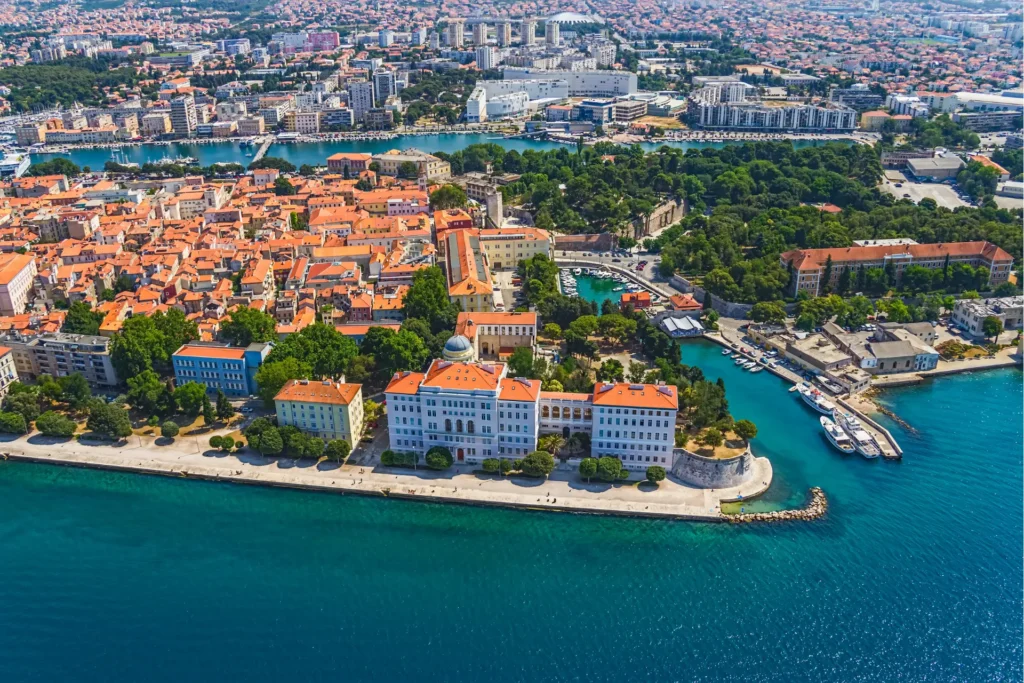
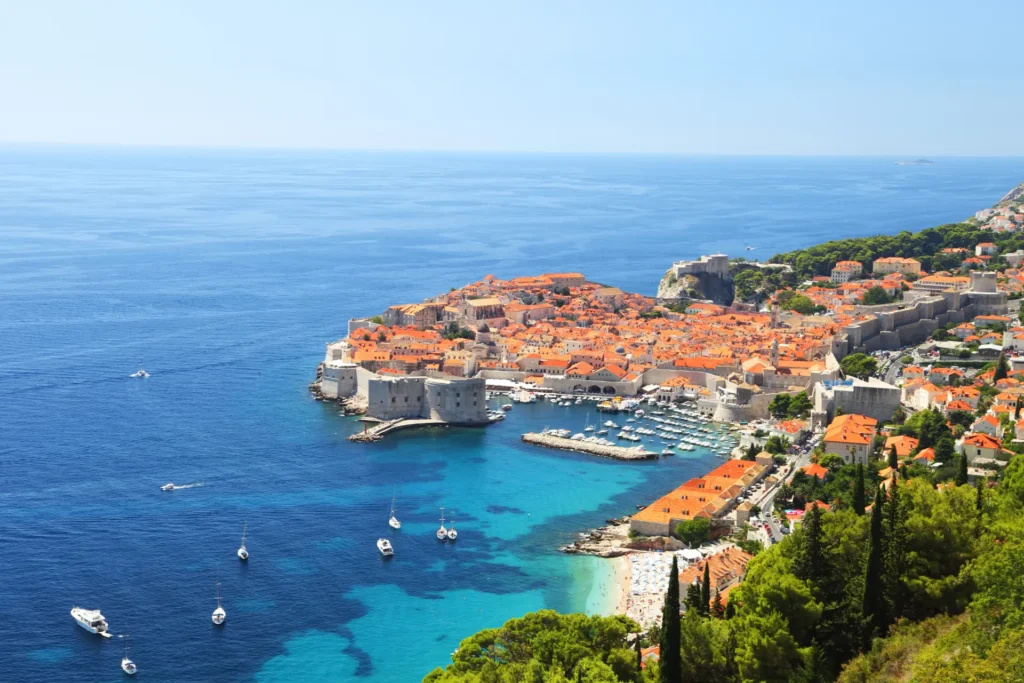
Dubrovnik
Dubrovnik, also known as the ‘Pearl of the Adriatic,’ is a city brimming with adventure. One of the most iconic experiences is walking atop the ancient city walls, where you will get spectacular views of the Old Town and the Adriatic Sea. For even more breathtaking views, take the cable car up to Mount Srđ; the panorama of Dubrovnik and the surrounding islands are especially magical at sunset. Just a short boat ride from the Old Town is Lokrum Island, a nature reserve featuring beautiful gardens, peacocks, and a small salt lake known as the Dead Sea. If you’re a fan of the TV show ‘Game of Thrones,’ you can enjoy themed tours that bring the show’s iconic scenes to life by visiting various filming locations within the city. The region around Dubrovnik is also renowned for its exquisite wine. Join a tasting tour to sample local varieties, such as Plavac Mali. For arts and music enthusiasts, a visit to Fort Lovrijenac is essential. This majestic fortress, often referred to as Dubrovnik’s Gibraltar, is not just a historical marvel but also a venue for plays and performances, particularly during the Dubrovnik Summer Festival.
Rijeka
Rijeka is Croatia’s principal seaport and the third-largest city in the country. Start your adventure by making your way down to its main promenade, the Korzo, lined with grand Habsburg-era buildings and bustling cafes, or enjoy some retail therapy in shops ranging from chic boutiques to local artisan stores. Take a walk along the Molo Longo, where you can relish views of the city and docked ships; it’s a favorite spot for locals to relax and enjoy the seaside ambiance. Spend a day sunbathing, swimming, or engaging in water sports at popular spots like Sablićevo Beach. For an exciting and unique experience, venture underground to Rijeka’s hidden gem, the TunnelRi, a historic pedestrian tunnel that runs under the city now transformed into a vibrant cultural space hosting a variety of intriguing events. If you’re visiting in late winter, don’t miss the Rijeka Carnival, one of Europe’s largest and most vibrant celebrations, featuring colorful parades, elaborate costumes, and festive events.
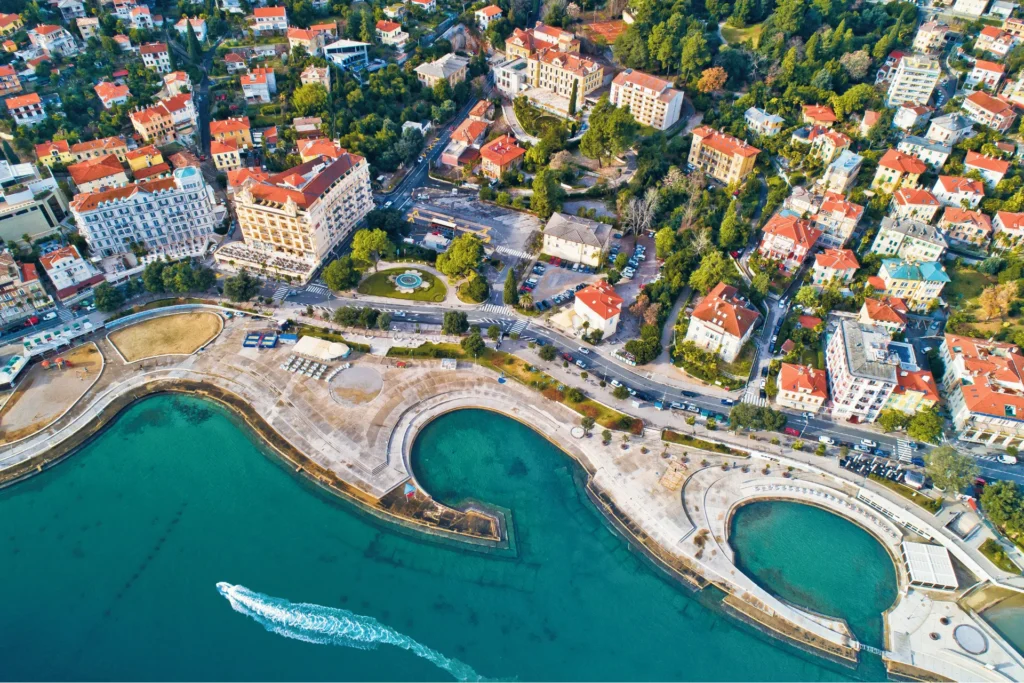
Split
Split, nestled on Croatia’s Dalmatian coast, is a city where history, natural beauty, and culinary delights intertwine. The Cathedral of Saint Domnius is a stunning architectural marvel that once served as Diocletian’s mausoleum, blending Romanesque and Gothic styles. Art enthusiasts will find a treasure trove at the Mestrovic Gallery, dedicated to the works of Ivan Meštrović, Croatia’s famed sculptor and architect. Foodies can delve into the local flavors by joining a Croatian cooking class, learning to prepare traditional dishes like Pašticada, a rich Dalmatian beef stew, or try your hand at making Soparnik, a beloved local savory pie filled with Swiss chard and garlic. For dessert, treat yourself to a local Rožata, a creamy caramel custard with a hint of rose liqueur. Hike or Bike Marjan Forest Park, where numerous trails lead to secluded beaches and historical sites. Enhance your culinary journey with a visit to Split’s cellars for a wine tasting session, offering an insight into the region’s exquisite wine varieties. As the day fades, a visit to Diocletian’s Palace after dark is a must; explore its ancient corridors and courtyards in a new light, experiencing the mysterious and intimate atmosphere of this historic site.
